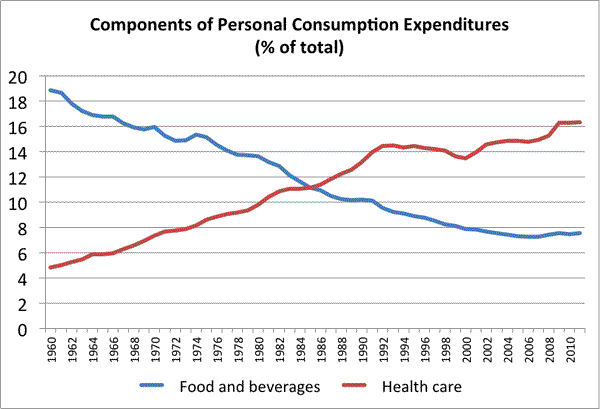The New York Times presents a comparison of average tax rates since 1980 to make the argument that most taxpayers in the US face lower taxes today that back in 1980. Greg Mankiw does not like the fact that they link the year 1980 to Ronald Reagan’s policies as instead he picks the end of Ronald Reagan’s second term.
It is important to look at the evidence on how tax rates have changed but what should be the benchmark here? Should we be alarmed if were to find that tax rates have gone up in the last decades? Should we be pleased that tax rates have gone down?
Governments need to raise revenues in a way which is consistent with their levels of expenditures. Their level of expenditures is determined by political choices (demands for services that are provided by governments) combined with the efficiency that governments have at providing those services. It is impossible to make a general argument about the need for governments to become smaller or larger over time unless one is willing to provide the details on what are the services that should or should not be provided by the government or what are the efficiency gains that could be achieved. It is only after those arguments are presented that one can talk about whether tax rates should be flat, increasing or decreasing.
One thing we know is that some of the services that we ask governments to provide, are becoming more expensive over time. In particular, if we look at health care we all are interested in buying more of these services and when we buy them, their cost is growing faster than inflation. As a result, when we look at health care expenditures as a % of GDP, they keep increasing. And this has nothing to do with governments. I produced the chart below in an earlier post that shows how the share of health care expenditures in private consumption has increased dramatically over the last decades (US data).

Given the above trend and given that healthcare expenditures represents a large share of total government expenditures in advanced economies, it should have not been a surprise to see that governments are becoming larger and that, as a result, tax rates are going up. That is the benchmark against which we need to compare the data, not one with a constant tax rate.



Leave a Reply